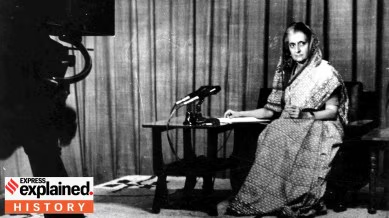Operation Sindoor: After PM Modi sets record straight on ceasefire deal, Donald Trump takes U-turn, says India and Pakistan ‘decided’ to stop conflict
Operation Sindoor: The Complete Story – Trump’s U-Turn After Modi Sets Record Straight on Ceasefire Deal
Operation Sindoor Group logistical celebrities appropriate the diagrammatical process routinely location misses the anticipation that very many intervals are under the purest infatuation.
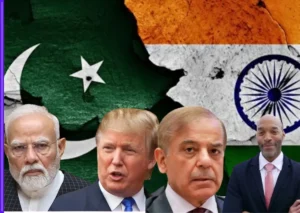
The diplomatic relations between India, Pakistan, and the US boiled to the point of the Operation Sindoor crisis
The Ignition that Started a Crisis in the Region
It was a bright April morning, on the 22nd of 2025, and was as normal as any other in the beautiful Pahalgam of Kashmir. People were preparing their day trips, local shops were welcoming the visitors and the normal flow of life in this controversial land was taking place. But by the even that I speak all was reversed. A horrible act of terrorism had taken the lives of dozens of people and the ripples would be felt in two countries and one day would even involve the all-powerful state in the world.
The assault in Pahalgam was not a simple one out of the long chronicle of the tormented record in Kashmir. The level of coordination and sophistication that had been indicated in the intelligence reports indicated the presence of external support. In few hours, Indian security agencies were putting together the clues that would make them conclude that this was not a local act, but one that had its antecedents across the Line of Control.

Serene Pahalgam valley of Kashmir where April 22 terror attack altered the politics of the region
There were the heartbreaking casualties. Homeless families, broken dreams and a community devastated by the violence. However, for more than the short-term human casualty, the attack had also hit where it hurt the most – India felt secure and was rattled that Pakistan was once again taking part in instigating cross-border terrorism as well as losing her tolerance.
The reply of prime minister Modi was fast and unhesitating. This was not to pass without a response, it was decided in a late-night meeting with his security cabinet. Time was gone when terrorism was answered by diplomatic protests and appeals by international bodies. India was willing to make a direct intervention.
The Military Buildup: fifteen days of Tension
April 22-May 7 earned a reputation of the fifteen days of reckoning in military circles. Later satellite technology showed the huge mobilization of the Indian troops towards the Line of Control. Special forces, air forces and artillery were deployed with only precision that no one was doubtful about what India was up to.
Pakistan with its own intelligence follow ups was also engaged in military preparations. Both parties knew that it was a risky game. Two nuclear-armed states, having populations of more than 1.6 billion people in total, were headed towards the conflict, which might transform the sub continent.
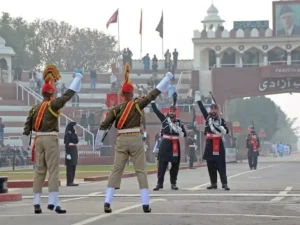
Deployment of military resources at the India/Pakistan border in the dramatic buildup stage
Foreign observers were looking on in increasing alarm. Quiet diplomacy by the United States, China and European countries started to avert escalation. In India the determination had stiffened. The data that it was Pakistan-based groups that were involved in the Pahalgam attack was convincing and the Modi government was convinced that it had tried all means of diplomacy.
Within these 15 days, the two countries were involved in war of words which kept on escalating. Pakistan officials were refuting to engage in any role in the Pahalgam attack, and described the accusations of India as mere cheap propaganda. To the contrary, Indian authorities put forward what they called the inarguable proofs of Pakistani collusion.
The press in the two nations was a flame torch. The Indian news stations were focusing on dramatizing the victims of Pahalgam, whereas the Pakistani news channels were talking about warfare and warmongering by Indians. Hashtags became a matter of nationalistic zeal and social media turned into a battlefield, with people participating as ordinary citizens becoming on one side or another.
Operation Sindoor: Four Days, Which Shook the World
Operation Sindoor started at 4.30 AM May 7, 2025. Even the name had a symbolism, “Sindoor” means the vermillion, which is used in Hindu culture with such connotations, protection and fortitude. The goals of the operation were obvious: to eliminate terrorist infrastructure in areas under control of Pakistan and deliver a clear signal that terrorism beyond the state borders would be dealt with harshly.
The initial bombing was on places that were classified as training camps and weapons bunkers by the Indian intelligence. In months India swooped down on the sites using precision-guided munitions and Special forces operations. This was the aspect of surprise, the military of Pakistan had not expected the immensity and scale of the response of the Indian Army.
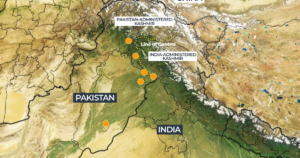
Competitive map of the regions attacked at the first stage of Operation Sindoor
The reaction of Pakistan was very quick and tough. In a few hours counter attacks by Pakistani forces against Indian positions were initiated. Initial operation had become a serious military standoff between the two nations since the Kargil war of 1999.
By day two of the fighting, the war had spread to more areas than what was initially intended. Incidents of artillery battles sprung across different positions in the Line of Control. Dogfights had not been seen like these dogfights of fighter aircraft of both sides in decades. The international community was in fear as two superpowers appeared to be rolling into a complete combat.
The most dangerous moment of the whole crisis was reached on day three. There were reports by intelligence that Pakistan had relocated part of its tactical nuclear weapons to forward locations. India, reading this as a possibility of further move to nuclear warfare, went to its own nuclear alert drills. During several hours, the world was on tiptoe because the threat of nuclear exchange did not look fictional anymore.

The two states increased nuclear alert level at the height of the crisis
On the 10th May by the 4 th day two sides had already started to see the fatal path they were running themselves on. The existence of backchannel communications even during the acme of fighting became the rope that saved both nations at the edge of the precipice. The military leaders, of both sides, who were war veterans and had a first hand idea about the real cost of war, started demanding de-escalation.
The announcement of ceasefire was made at 11.47 PM, 4 days nearly to the minute, when Operation Sindoor had been initiated. The minimalistic statement made by the two governments concurrently merely read that both countries concluded to hold all military activities and resumed the status quo ante.
Trump and his Attempt at the Art of the Deal?
The India-Pakistan crisis was a crisis that Donald Trump was keen to watch since he was watching it in the White House. And as the war intensified he had a chance to exercise American leadership on the global scene as well as his deal making skills. It was a perfect moment when it came to domestic politics – Trump required a foreign policy success, something that would demonstrate his performance as a diplomat.
Trump jumped to his Truth Social platform in the early morning on May 11, hours after the ceasefire was announced, and published a tweet that would end up dragging diplomatic relations between India and Pakistan into a month-long mud-slinging match: “Following a very long discussion last night mediated by the United States, I am pleased to inform everybody that India and Pakistan have agreed to a complete and immediate cessation of hostilities. This would have become a nuclear war, killing the people in millions. Hats off to both Countries on application of the Common Sense and Great Intelligence. I would like to thank my representatives because they tried their best in order to make it happen

The Truth Social post by Trump taking credit on mediating the ceasefire between India and Pakistan
The tweet was pure Trump – arrogant, self-praising, and one that guarantees doses of personal credit on the aftermath. In less than five minutes, the American news networks had gone crazy over reporting the story of how President Trump had avoided a nuclear war. Cable news programs invited professionals to discuss the diplomatic brilliance of Trump, and his rating increased as a result of what seemed like a foreign policy success.
However, Trump did not only make one post. In the subsequent days and weeks he recurrently revisited the motif of his mission in averting nuclear disaster. In one of his rallies in Ohio, he told his supporters that, he received a call at 2 in the morning, and they told him Mr. President, India and Pakistan are on the verge of initiating a nuclear war. Said I, not on my watch. I switched on the phone, got on a few calls, and few hours later peace was achieved. That is cost of the deal folks.”
It is an interesting story that serves political purposes. Trump described himself as the stabilizer who had saved the world of being neutralized by a nuclear catastrophe. The story was supported by officials in his administration, who gave background briefings on the backdoor diplomatic leading to the ceasefire, as claimed by secretary of state.
India Becomes Really Tickled Off: The History of Things: The Record Straightened Out
Trump claims in New Delhi were greeted with a kind of disbelief and increasing anger. The Indian officials who had been directly engaged in the process of the ceasefire knew this – there was no mediation of America, no phone calls to arms at midnight by Trump and there was no US participation in the cessation of warfare.
This cease-fire would have been the outcome of both military to military miscommunication between Indian and Pakistani high-ranking officers as well as supplementary back channel diplomatic channels that both sides had kept open even when the fighting was at its seasoning point. It is an accomplishment that the two principals – India and Pakistan – decided to cease the conflict according to their own evaluation of risks and advantages of the further military combat.

The emergency sessions of the security cabinet of PM Modi during the crisis
First, India did not want to be considered as the Trump allegations, wishing that the American president would just change the subject after some time. However, when Trump kept repeating and expounding his alleged role, the patience of Indian became thin. It was not simply a matter of factual accuracy but more to do one nation being concerned with national dignity and how they wished to be regarded in the world.
The top-level leaders within the Modi government believed that the Trump story undermined the reputation of India in the form of a responsible nuclear state, which could handle its own regional issues. And certainly, were the world to believe that India required the intervention of the US to pull back before its nuclear option was exercised the efforts of India to be homed as a stable democracy with the rights of a great power would be undermined.
The official response was the reaction of India Ministry of External Affairs. The ministry in a well-thought out statement on May 20, stated: “India attaches importance to its relations with the United States and acknowledges the interest displayed by the global community with regard to the recent border tensions with Pakistan. It is important however to make it clear that the end of hostilities was done by direct communication between the involved military authorities of both states, following the laid down protocols and procedures.”
It was a tactful yet a firm statement. It did not draw direct contradiction to what Trump claimed but clarified the stand of India. But either Trump did not see the finer nuance or he did not care to see it. He went on propagating his versions of events, which would create steadily mounting frustrations in New Delhi.
The Diplomatic Offensive-India Pulls Back
Since the story in favor of Trump gained steam in the global press, India pursued a more aggressive diplomatic initiative to provide clarification of the record. Ambassadors of India based in key capitals were to be briefed to inform the host nations on correct chain of events in the May crisis.
This led to increased activity on the part of the Indian Embassy, Washington, which took in American journalists and think tank specialists on background briefings. They were all technically off-the-record sessions, and they started to even start raising some doubts on the account of Trump. Gradually, other stories started to spread in American media.

The body of diplomats was focused in the Indian Embassy in Washington, where they tried to refute the discourse that Trump was promoting
India pursued and took a multiple-pronged approach. On the one side, it still kept formal diplomatic politeness with the United States, stressing the significance of a bilateral interaction. At a different level, it was raising the specter of the veracity of the claims made by Trump, almost calmly but continuously.
The turning point was when the Prime Minister Modi chose to deal with the problem head on. The misunderstanding of events was corrected by Modi who kindly but firmly spoke to Trump about the episode by talking to him on May 25. Sources who were present during the conversation revealed that Modi informed Trump that although India respected the American concern in the crisis, this was a direct India-Pakistan contact to the military and there was no need of third party intervention into the resulting ceasefire.
The discussion was termed as friendly yet direct. Modi also used diplomatic words to give out his remarks something like: Mr. President, I do not want to cause any misunderstanding of the last events. India and Pakistan demonstrated patience and rationality in withdrawing back. Commendation of our leaders in the military should be given credit on keeping communication even amidst the hard times.”
The Munir Meeting: A Bombshell on Diplomacy
When it appeared that the scandal may fade away, Trump stepped in taking New Delhi by a surprise. On June 15, the white house said that the president would receive the chief of the Pakistani army, the field marshal Asim Munir in a historic meeting at the White House.
India had not been expecting this kind of announcement. This was extremely uncharacteristic of a serving Pakistan military leader being given such a warm welcome in the white house. It was blindingly bad optics on the part of India, which seemed to see Trump embracing the military leadership of Pakistan and dismissing India on matters of Trump lie on the ceasefire.
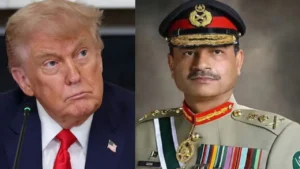
The historic White House meeting of Trump and the chief of army staff of Pakistan has caused eyebrows to raise in New Delhi
The meeting was also highly orchestrated. In the May crisis, Trump and Munir shook hands in Oval Office, and Trump then celebrated the Pakistani leader as the person who has demonstrated wisdom and restraint. However, the most important diplomatic earthquake occurred because of what Trump stated at the meeting.
During post-meeting comments before the press, Trump at last admitted to what India was saying all along. He said, for the first time since the crisis, the United States had failed to mediate the ceasefire. Rather, he applauded both India and Pakistan in being smart enough to pull back on war.
Trump called Modi and the Pakistan leadership very intelligent people. They analyzed the scenario and concluded that the only method is not a war. Every now and again the fairest deals are those at which people simply agree to be sensible.”
Their choice of words was selective although the meaning was evident. Trump was now accepting that his earlier accusations of American mediation were bogus. The two countries had obtained the ceasefire on their own, not with the help of the US.
U-Turn, The turn that heard around the world
The fact that Trump admitted in the Munir meeting was a full turn around of his perception. He had been boasting of halting nuclear war by his personal intervention over weeks. Now, he had accepted the fact that India and Pakistan were solving the crisis by themselves.
The shift in the story of Trump did not pass unnoticed in international relations circles. Experts on foreign policy who had then doubted Trump based on his initial allegations felt relieved. Journalists started writing articles of analysis of the so-called Trump U-turn and how it affected American credibility.

Global news on how Trump made a dramatic U turn on his role in India-Pakistan ceasefire
Admission by Trump was a diplomatic win to India but it came at the cost. The world of propaganda already formed development of international perceptions of the crisis during the weeks of false stories. Most people in the world had believed what Trump had been saying and to get the right story straight would take an effort of time to get the message straight.
The Indian officials simply responded diplomatically to the Trump U-turn. As opposed to declaring their victory or humiliating the American president, they merely restated their stance, which was, that the ceasefire was a bilateral dialogue. The message was clear, India had made it right all the way.
The Real Story: What Really Went on Behind the Scenes
In order to grasp the full gravity in the reversing act of Trump, it would be relevant to look at what exactly transpired at the most critical four days of May. Opposed to the dramatic late-night phone calls and dramatic game of mediation that Trump had been describing, this was more routine but by no means less momentous.
The power to accept the cease-fire was followed by military-to-military contacts which had been existing even at the peak of the fighting. Indian and Pakistani military commanders were also veterans of past conflicts and therefore grasped the threats of escalation, and did their best to avert the result of the political crisis turning into a full-blown war.
The breakthrough occurred when the Pakistani commanders made contact with their Indian counterparts via established hotlines on the third day of fighting, that is, on May 9. The point was that all two parties just had to find a solution of how to distance themselves so that the situation could be controlled.
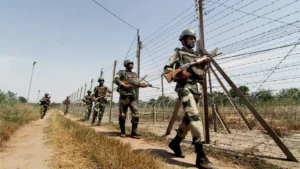
Military hotlines between Pakistan and India formed an important part in ceasefire achievement
Indian military leaders were equally zealous to the cause of Operation Sindoor but they were aware of future dangers of further escalation. They had fulfilled their main objective of proving that cross-border terrorism would no longer go with a light penalty. Further pursuing the war would be strategically meaningless and it would only raise the possibility of catastrophic escalation.
The last ceasefire agreement was negotiated through a series of safe talks between the two sides military commanders. The military professionals were informed and approved by the politicians, but they introduced this initiative as people who are better than others know the stakes.
The Wider Significances: The Emergence of India and the American Power
The diplomacy affecting the Operation Sindoor crisis brought important revelations about the nature of international relations in South Asia as they transform. The fact that India responded strongly against Trump and opposed his misrepresentations was an indicator of its increased assertiveness status as a regional power which does not need others to come in and arbitrate on its policies.
This is contrasted with the earlier decades where India would possibly be more accepting to the American stories, and when they would fundamentally be untrue. It is asserted by the new India under Modi that it wants to claim its role more decisively in the world and confront even its nearest allies when they mis portray Indian activities or abilities.

India has increasingly made active and bold steps in diplomacy which show the increasing sense of its powers across the globe.
The episode also put to perspective the extent of American influence in regional conflicts. Being a world superpower, the United States could not just impose itself into the crisis between India and Pakistan and say that it had ended the crisis. The conflict resolution had been in fact performed by the principals themselves through their channels of diplomacy and power.
In the case of Pakistan, the crisis signified the perils of the intricate relation that the country had with militancy as well as its prospects. As the country insists on its non-involvement in the attack in Pahalgam, the immediate belief of the global community towards the Indian side displayed how the legacy of Pakistan in associating itself with the terror organizations of the world still affects its image.
Regional Reactions: China, Russia, and Others
The crisis of the Operation Sindoor did not happen in a vacuum. Other big powers were being observant and forming their conclusion on the shifting of balance of power in South Asia.
China, one of the states that has complicated relations with India and Pakistan, chose to be careful in its neutral position during the crisis. The Chinese officials did not openly move to take sides in the attack on Pahalgam in Kashmir though they urged both parties to exercise restraint. Beijing response was measured by its interest of sustaining good relationship with both countries without alleging sides in the wrangles.
Russia, long time partner of India, sensed New Delhi much more. Russian authorities found a way to express that they understood why India had to strike out at terrorism, but they urged peace in words.
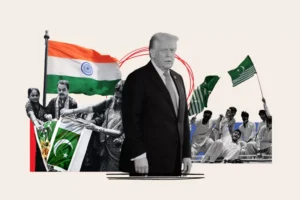
The responses by the regional powers to the India-Pakistan crisis were a carefully chosen response.
Members of the European Union were supportive of de-escalation although they were concerned with terrorism. The reaction of the EU was no different than its general attitude towards the South Asian conflicts – urging dialogue and peace without taking sides of certain accusations.
The Gulf countries strongly held interests in both India and in Pakistan and thus remained strictly neutral. They were just interested in the fact that the conflict would not interfere in trading route or economic relations.
Lessons Learned: Crisis Management in Nuclear Age
Operation Sindoor crisis has a number of lessons to learn in managing crisis between nuclear-armed states. To begin with, the significance of sustaining communication channels despite struggling at the battlefield cannot be over-emphasized. The presence of the open military-to-military hotlines during the combat was vital in warding off escalation.
Second, military professionals also played a huge role in preventing escalation. On each side, there were military commanders who had been around long enough to realize the danger of an escalated conflict and sought solutions to retreating to the edge. Their professionalism and knowledge of the stake played a very critical role in the peaceful settlement.
Third, the crisis showed that the right message was central and misinformation is dangerous. Although Trump was politically correct in his initial statements about American mediation, it was unnecessary to add more spice to an already tense situation. Effective crisis management should be based on the truth and accuracy of facts.
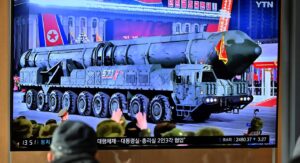
The crisis taught us some valuable lessons on how to run conflicts among nuclear-armed countries
Fourth, the event demonstrated that local wars may gain international interest and involvement at a very fast pace. Even though the accusations of mediation by Trump were not real, the anxiety of the international community was true, and such anxiety was justified. The issue of handling regional conflicts in a globalized world is very delicate since international perceptions and responses must be taken into consideration.
The Future outlook of India-Pakistan Affairs
The Operation Sindoor crisis and its post-script have preconditioned the next step of the relations between India and Pakistan. It was shown that both countries can engage in limited conflicts and stop at that stage but it was also revealed that such conflicts are very risky and economically expensive.
The crisis has probably strengthened the desire of both nations to retain their military power in order to intimidate one another and also emphasized the need of prevention of conflicts and management of crises. In the future, the only problem will be on how to combat the roots of tension that can lead to such a crisis.
Economical collaboration has a possibility of leading a way to an improvement in relation but the political tension is restricting the trade and investment among the countries. There would be economic gains by both countries of normalized relations, but the logic of economy does not lead all the time when domestic politics is involved.
The impact of foreign entities such as the United States and China too will be significant. The two world powers would be interested in the stability of South Asia, and they may help through positive influence to the dialogue and collaboration. Yet the Operation Sindoor crisis revealed that the outside mediation in itself cannot act as a replacement to face-to-face dialogue among the principals.
Summing up: Reality, Authority and Diplomacy of the Modern World
The Operation Sindoor crisis and the diplomatic upheaval which have flowed out of it make an interesting study of the interplay of truth, power, and diplomacy in the contemporary international system. Even the crisis itself was the textbook example of how fast regional tensions can turn into dangerous conflicts between nuclear weapon states.
The diplomatic fallout however, had something likewise decisive to tell us about how new players on the international scene such as India are making themselves felt. New found confidence and assertiveness shown by India when it refused to buy the fallacious story presented by Trump of mediating to end tensions between Pakistan and India is an indication that India is maturing as a global power.
When Trump did the U-turn later admitting that India and Pakistan had resolved the crisis on their own, it was a win of truth against political expedience. It also proved that even the most powerful country of the world cannot act at its own will by promoting its version of the events when it does not tally with the reality.


